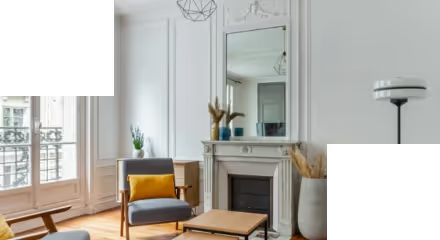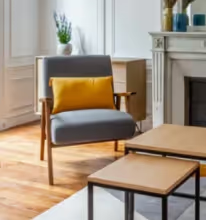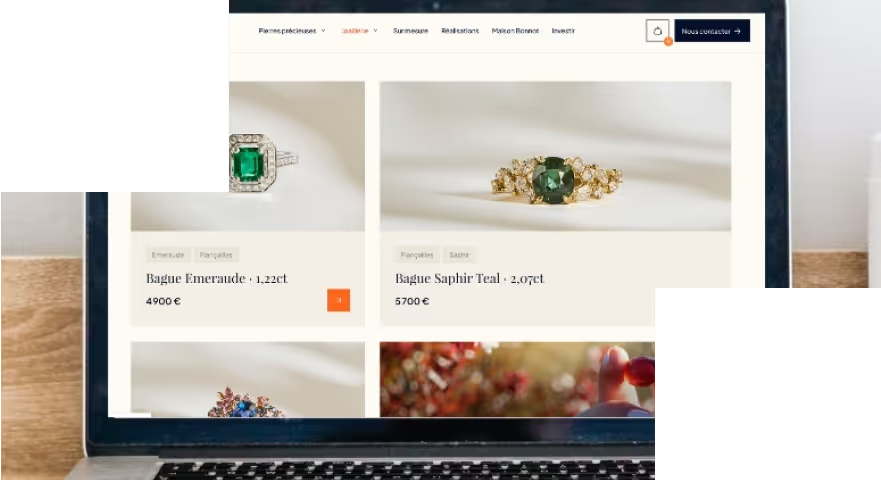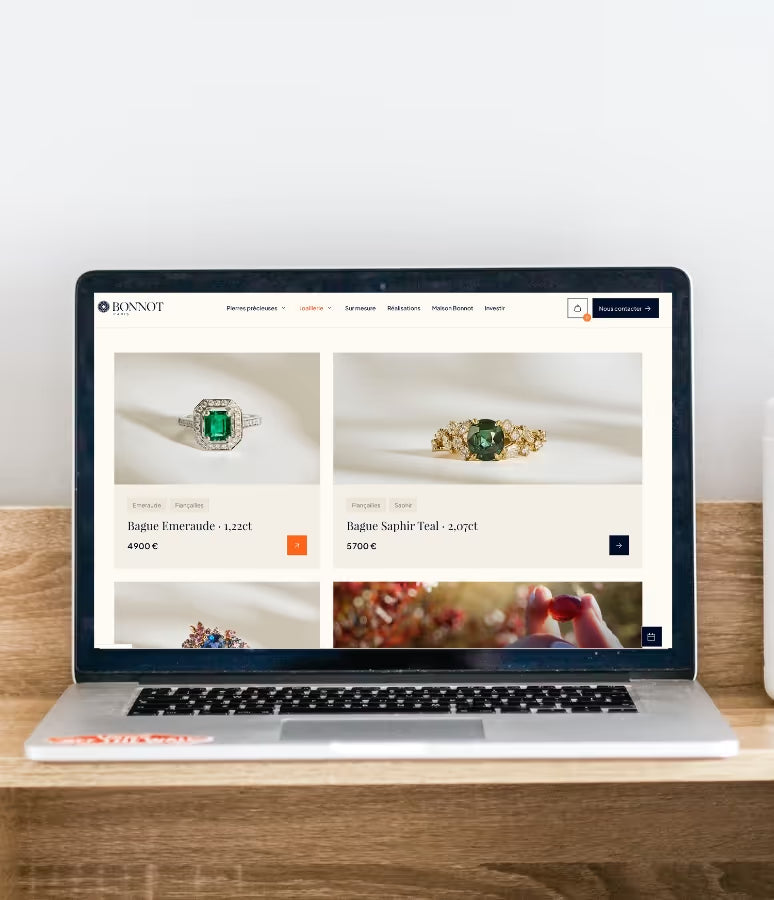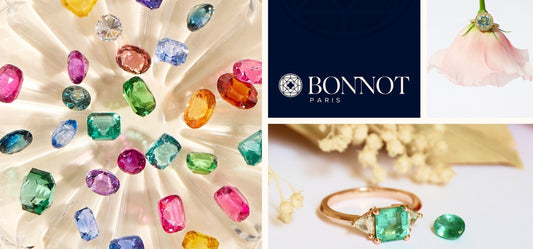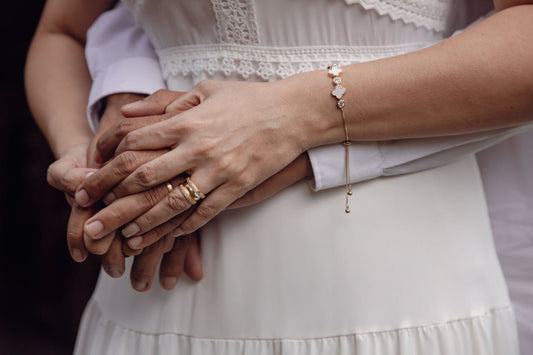Value, characteristics and meaning of Sapphire
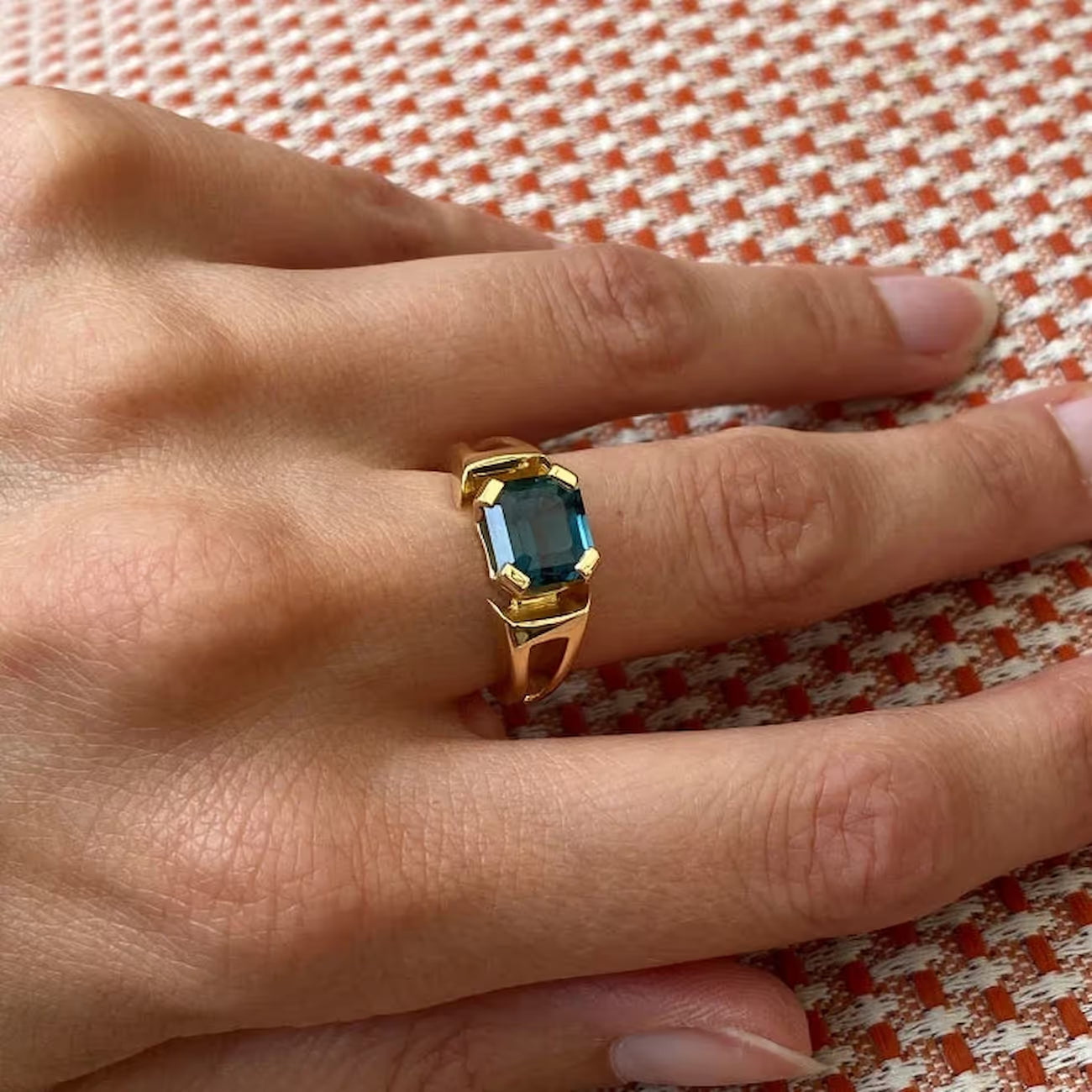
The origin of the Sapphire
The colors of sapphire
The shades of blue of sapphire
The main other colors of sapphire
The value of sapphire
The meaning of sapphire
Choosing a sapphire ring
Discover an exclusive selection of sapphires
The origin of the Sapphire
Rather, we should say “the origins of sapphire”, in fact, sapphires are mined in many countries around the world.
THE Sri Lanka has remained the main producer of sapphires for several hundred years, which has even given rise to the name “Ceylon Sapphire” which expresses a blue sapphire color typical of Sri Lanka. There are some rare high quality stones there, notably the padparadscha sapphire.
Madagascar is the second country in which the most sapphires are found. It is in Madagascar that we find some of the most beautiful teal sapphires.
Despite everything, the most sought-after sapphires on the market are those of the Cashmere, whose mines are now exhausted, and those of BurmaThe most beautiful specimens are collector's items.
Sapphires are also found in Nigeria, in Australia and even in France but the quality is not always there. Also read on our site: How to recognize a sapphire ?

The colors of sapphire
Contrary to popular belief, sapphire is not always blue. It comes in all colors except red, since red sapphires are called “Rubies.”
The color of sapphire comes from the presence of various elements in the crystal structure of corundum, which is the mineral that makes up sapphire. Here are some elements that influence the color of sapphires:
- Iron and Titanium: These elements give sapphire its characteristic blue color. The quantity and arrangement of these elements in the crystal structure determine the intensity of the blue color.
- Chromium: The presence of chromium gives sapphire a pink color. When the concentration of chromium is high, the sapphire can even turn red, technically making it a ruby.
- Vanadium: This element gives a purple tint to sapphire.
- Iron: In the absence of titanium but with iron, sapphire can take on a yellow or green color.
Please note that we offer a service ofgemstone appraisal in Paris.
The shades of blue of sapphire
The color of sapphire"Cornflower" is a particularly prized shade of blue, often described as a medium to intense blue with lavender undertones. This color is compared to that of the petals of the cornflower, hence the name "Cornflower" in English. This type of sapphire is known for its saturated and vibrant color that does not veer toward green or purple. The purity and clarity of this shade of blue make it one of the most sought-after and valuable types of sapphire on the market.

Here is an exceptional 14.10ct Cornflower Sapphire for a Bonnot Paris client project.
The color "Royal Blue" in sapphires is considered one of the most prestigious and desirable shades of blue. It is characterized by a deep, intense blue, often with a slight hint of violet.This color is rich and saturated, but not so dark that it appears opaque or black to the eye. The term "Royal Blue" is often associated with stones of the highest quality, and it is commonly used to describe sapphires that are considered to be of exceptional quality.

8.2ct Royal Blue Sapphire for a Bonnot Paris client project.
The color "Ceylon Blue" in sapphires refers to a light to medium shade of blue, often with pastel tones. These sapphires get their name from their place of origin, Sri Lanka, formerly called Ceylon. Ceylon sapphires are known for their soft, luminous blue color, which can range from very light to medium. They are often less saturated in color than "Royal Blue" sapphires, but are still highly prized for their brilliance and clarity.
Discover our blue sapphires here

5.45ct Ceylon Blue Sapphire for a Bonnot Paris client project.
The main other colors of sapphire
The color yellow Sapphires can vary considerably, offering a range of choices for all tastes and occasions. Ranging from pale, almost pastel yellow to intense golden yellow, each shade has its own personality and appeal. Yellow sapphires can also exhibit green or orange undertones, adding further complexity to their appearance. Lemon yellow sapphires offer a lighter, cooler hue, while golden or canary yellow sapphires exhibit a deeper, richer color.
Discover our yellow sapphires here.

5.45ct Yellow Sapphire for a Bonnot Paris client project.
The Teal Sapphire is an exquisite variety that features a unique combination of blue and green, reminiscent of the color of a mallard's tail feathers. This particular shade offers an intriguing alternative to traditional blue or green sapphires. Teal sapphires can vary in intensity, from lighter hues to deeply saturated colors, and they can exhibit variations of blue and green depending on the angle from which they are viewed.
Discover our Teal sapphires here

2.24ct Teal Sapphire for a Bonnot Paris client project.
The color of the pink sapphire It ranges from pale pink to bright pink and can even tend towards a deep magenta pink. This range of shades is due to the presence of trace amounts of chromium in the crystal structure of the mineral corundum, which is the basis of all sapphires. High-quality pink sapphires are those that exhibit a rich, saturated pink color without visible inclusions.
Discover our pink sapphires here

3.02ct Pink Sapphire for a Bonnot Paris client project.
The value of sapphire
The value of a sapphire depends on many factors that are sometimes difficult to understand when you start looking for a stone. Here are some points on the main factors that contribute to the sapphire price :
- Clarity:
A sapphire, like other stones, can contain inclusions. Inclusions are internal or external imperfections that can appear as cracks, bubbles, or foreign minerals within the stone.Generally speaking, the fewer inclusions there are, the higher the value of the stone.
However, it is especially important to identify where these inclusions are located: an inclusion visible from the table significantly devalues its price, the same is true for an inclusion close to the lamination (this can weaken the stone if it is mounted in jewelry). Conversely, if the inclusion is neither visible from the table nor located towards the pavilion of the stone, then the impact on the price will be minimal.
- The color:
Color is a determining factor in assessing the price of a stone. Several components must be evaluated to establish the price of a blue sapphire or other color:
- Tint: This is the basic color of the sapphire, which can vary from blue, green, yellow, pink, etc. The hue is often the first thing that is noticed and plays a crucial role in determining the value of the stone.
- Saturation: Saturation refers to the vividness or intensity of the color. A sapphire with a highly saturated color will be considered more valuable than one with a weak or washed-out color.
- Tone: Hue describes the lightness or darkness of the color. Sapphires are generally more valuable if they have a medium to medium-dark tone, as they show the color most richly.
- Uniformity: The color should be evenly distributed throughout the stone. Uneven areas of color can decrease the value of a sapphire.
- Glow: Although not strictly a component of color, the luster of the stone can affect the perception of its color. A good luster can make the color more vibrant and attractive.
- Color Zoning: Some sapphires may have areas where the color is more intense or paler. Color zoning is generally considered a flaw and can reduce the value of the stone.
- Optical Phenomena: Some sapphires exhibit phenomena such as starburst or color change, which can add to their value and appeal.
- The size
Cut refers to the quality of the stone's faceting. Indeed, this element can be decisive when it comes to evaluating the price of a stone. A beautiful stone is above all a well-cut stone, with uniform proportions, good symmetry and a good polish. The most common shape is the oval sapphire.
It is not uncommon in the stone market, especially when you get closer to the mining areas, to see stones with a large culet, which artificially increases its weight and therefore generally its price. You must therefore pay close attention to this criterion. At Bonnot Paris, we cut or recut the stones we offer ourselves.
- The mass
Weight is obviously a determining factor in assessing the value of a sapphire. The price per carat of a sapphire increases exponentially as its mass increases. This is due to the fact that 1ct stones are much more common than 10ct stones. Depending on the rarity of certain colors, this increase will be more or less significant.
- Treatments:
On the market, we find a vast majority of heated sapphires, that is to say that we come to imitate in an accelerated manner the action of the earth on the stone in order to make it more desirable.This heating treatment has no impact on the quality of the stone but does have a definite impact on its price. Since unheated sapphires are rarer, they are obviously more expensive. This can even be double the price depending on the variety of sapphire.
There are many factors that determine the price of a sapphire. At Bonnot Paris, we are dealers and jewelers, and we help our clients find the ideal stone for their sapphire ring.
The meaning of sapphire
Sapphire is much more than just a gemstone. It embodies wisdom, dignity, and loyalty—qualities that resonate deeply with the essence of Bonnot Paris. In various cultures, the meaning of sapphire is essentially that of a symbol of divine protection and spiritual guidance. Its color, reminiscent of the starry sky, evokes a sense of infinity and opens the door to contemplation and meditation. It is also the birthstone of September.
At Bonnot Paris, we select sapphires of exceptional quality, allowing this majestic stone to find its place in bespoke creations that transcend time and trends.
Choosing a sapphire ring
Choosing a sapphire for a ring or jewelry project means embracing a color palette far broader than traditional blue. From romantic pink to sunny yellow, to rarer hues like green or purple, sapphire offers a diversity that can adapt to any personality or occasion. This versatility makes it an ideal choice for an engagement ring, anniversary jewelry, or any other bespoke creation. At Bonnot Paris, we help you find the sapphire that not only matches your taste, but also conveys the meaning or emotion you wish to express. It's more than an aesthetic choice; it's a decision that can transform a piece of jewelry into a lasting heirloom. Bonnot will guide you through your project from start to finish. sapphire ringDo not hesitate to make an appointment in one of our showrooms in Paris or Angers.
Discover an exclusive selection of sapphires
Pink Sapphire:
Teal Sapphire:
Blue Sapphire
Also read
• Cleaning a sapphire: how to do it?
Founder of Bonnot Paris
